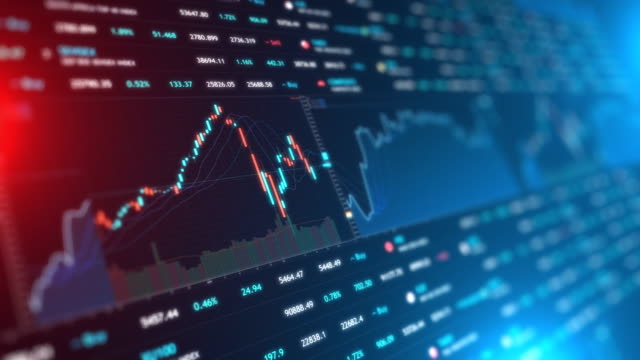Commodity Markets Surge: A Deep Dive into the Recent Price Rally
Meta Description: Explore the recent surge in commodity prices, focusing on factors driving the rally, key players, and potential implications for global markets. Discover insights from market experts and learn about the impact on diverse sectors.
The global commodity market, a complex ecosystem driven by supply and demand dynamics, has seen a significant upswing in recent weeks. This surge, impacting a wide range of commodities from metals to energy and agricultural products, has triggered a ripple effect across various industries and economies. This piece delves deep into the reasons behind this rally, exploring the intricate interplay of factors driving the price changes, and analyzing the potential impact on global markets and different sectors.
Imagine a world where the cost of building a skyscraper skyrockets due to soaring metal prices, or where a simple cup of coffee becomes a luxury item due to fluctuations in the coffee bean market. This is the reality that commodity price volatility presents. Understanding the forces at play behind these price fluctuations is crucial for businesses, investors, and consumers alike.
This article will not only dissect the current market trends but also provide valuable insights into the potential future trajectory of commodity prices. We will delve into the intricacies of supply and demand dynamics, explore the impact of geopolitical tensions, and analyze the role of speculation and investment in driving these price changes. Buckle up, as we embark on a journey to understand the complexities of the global commodity markets.
The Rise of Commodities: Analyzing the Drivers
The recent surge in commodity prices is not a singular event but rather a complex interplay of various factors. Here are the key drivers behind this shift:
1. Reopening Economies and Increased Demand:
As economies worldwide emerge from the pandemic-induced slowdown, demand for raw materials has surged. This renewed demand, particularly in manufacturing and construction sectors, is a primary driver of the commodity price rally.
2. Supply Chain Disruptions:
The pandemic's impact on global supply chains continues to linger, creating bottlenecks and delays in production and transportation. These disruptions have exacerbated existing supply constraints, resulting in higher prices for commodities.
3. Geopolitical Tensions:
The ongoing geopolitical tensions, particularly the war in Ukraine, have added fuel to the commodity price fire. The conflict has disrupted global supply chains, particularly for energy and agricultural commodities, driving prices higher.
4. Inflationary Environment:
Global inflation remains a significant concern, and central banks are grappling with rising prices. As consumers and businesses grapple with higher costs, demand for commodities, seen as a hedge against inflation, has increased further.
5. Speculative Activity:
Investors are increasingly looking towards commodities as a safe haven asset in uncertain times. This speculative activity, driven by concerns over inflation and geopolitical instability, has contributed to the rise in commodity prices.
Key Players in the Commodity Market
The global commodity market is a dynamic ecosystem involving various players, each with its own role and influence. Understanding these key players is crucial for comprehending the market's complexities:
1. Producers:
Producers, ranging from individual farmers to large mining companies, are the primary suppliers of raw materials. Their production decisions, influenced by factors like weather, resource availability, and government policies, significantly impact commodity prices.
2. Consumers:
Consumers, encompassing industries, manufacturers, and individual consumers, represent the demand side of the equation. Their consumption patterns and buying decisions directly impact the market's equilibrium.
3. Traders and Intermediaries:
Traders and intermediaries, including brokers, exchanges, and logistics companies, facilitate the buying and selling of commodities. They play a vital role in price discovery and ensuring smooth market operations.
4. Investors:
Investors, including hedge funds and asset managers, contribute to market volatility through their investment decisions. They often participate in the futures and derivatives markets, seeking to profit from price fluctuations.
5. Governments:
Governments wield significant influence on the commodity market through policies, regulations, and interventions. These interventions can range from subsidies and tax incentives to import restrictions and export controls.
The Impact of the Commodity Price Rally
The recent surge in commodity prices has had a significant impact on various sectors and economies:
1. Manufacturing and Construction:
The rise in metal, energy, and construction materials prices has increased production costs for manufacturers and builders, potentially leading to higher prices for finished goods.
2. Energy Sector:
The surge in oil and gas prices has impacted energy-intensive industries, leading to higher energy bills for consumers and businesses. It has also increased the cost of transportation, impacting logistics and supply chains.
3. Agriculture:
The rise in fertilizer and energy prices has increased production costs for farmers, potentially leading to higher food prices for consumers.
4. Inflation:
Higher commodity prices contribute to inflation, putting pressure on central banks to control prices. This can lead to higher interest rates and potentially dampen economic growth.
5. Global Trade:
Fluctuations in commodity prices can impact global trade patterns, potentially shifting production and consumption patterns.
What's Next for Commodity Prices?
Predicting future commodity prices is a complex task, influenced by numerous and often unpredictable factors. However, several factors suggest that the current price rally may continue in the near future:
1. Persistent Supply Constraints:
Global supply chains continue to face disruptions, and it may take time to restore normalcy. This could continue to put upward pressure on prices.
2. Strong Demand:
Demand for commodities is likely to remain robust as economies continue to recover and infrastructure investments rise.
3. Geopolitical Uncertainties:
Geopolitical tensions, particularly the war in Ukraine, are likely to continue impacting supply chains and contributing to price volatility.
4. Inflationary Pressures:
Inflation remains a global concern, and central banks are likely to continue raising interest rates, which could further fuel commodity price increases.
However, some factors may potentially moderate the price rally:
1. Recessions:
The possibility of recessions in major economies could dampen demand for commodities, leading to price corrections.
2. Policy Interventions:
Governments may intervene to address high commodity prices through measures like price controls or strategic reserves.
3. Technological Advancements:
Technological advancements in resource extraction and production could increase supply and potentially moderate price increases.
FAQs
Q: How do I invest in commodities?
A: You can invest in commodities through various methods, including:
- Direct Ownership: You can purchase physical commodities like gold or oil, but this can involve significant storage and security costs.
- Futures Contracts: These contracts allow you to buy or sell a specific commodity at a predetermined price on a future date.
- Exchange-Traded Funds (ETFs): ETFs track a specific commodity index, offering a diversified way to invest in commodities.
- Commodity-Linked Stocks: Investing in shares of companies involved in commodity production or trading can provide exposure to commodity price movements.
Q: What are the risks associated with investing in commodities?
A: Investing in commodities carries inherent risks, including:
- Price Volatility: Commodity prices can fluctuate significantly due to factors like supply and demand, geopolitical events, and market speculation.
- Storage and Security Costs: Physical commodities require storage and security measures, adding to the overall investment costs.
- Counterparty Risk: Futures contracts and other derivative instruments involve counterparty risk, where the other party may not fulfill their obligations.
Q: How can I protect myself from commodity price volatility?
A: You can mitigate the risks associated with commodity price volatility by:
- Diversification: Spread your investments across different asset classes, including stocks, bonds, and real estate.
- Hedging: Use futures contracts or other derivative instruments to offset potential losses from price fluctuations.
- Long-Term Investment Horizon: Consider investing in commodities for the long term, allowing for price fluctuations to average out over time.
Q: What is the impact of commodity price fluctuations on the environment?
A: High commodity prices can incentivize increased resource extraction, potentially leading to environmental damage and resource depletion. However, they can also drive innovation and investment in sustainable technologies.
Q: What are the ethical considerations of investing in commodities?
A: Ethical considerations in commodity investing include:
- Labor Practices: Ensure that the companies you invest in operate ethically and responsibly, particularly regarding labor rights and working conditions.
- Environmental Impact: Consider the environmental impact of the companies you invest in, such as resource use, pollution, and carbon emissions.
- Social Responsibility: Evaluate the company's commitment to social responsibility, including community engagement, fair trade practices, and human rights.
Conclusion
The recent commodity price rally is a complex phenomenon driven by a confluence of factors, including reopening economies, supply chain disruptions, geopolitical tensions, inflationary pressures, and speculative activity. This surge has had a significant impact on various sectors, including manufacturing, energy, agriculture, and global trade. While the future trajectory of commodity prices remains uncertain, the factors influencing the current rally suggest that prices may continue to rise for the foreseeable future. However, potential moderating factors such as recessions, policy interventions, and technological advancements could impact this trajectory.
Navigating the volatile world of commodity markets requires a deep understanding of the driving forces, key players, and potential risks. By staying informed and making informed decisions, individuals and businesses can mitigate the risks and capitalize on the opportunities presented by these dynamic markets. The journey through the world of commodities is a complex one, but with a clear understanding of the forces at play, we can navigate its challenges and harness its potential.



